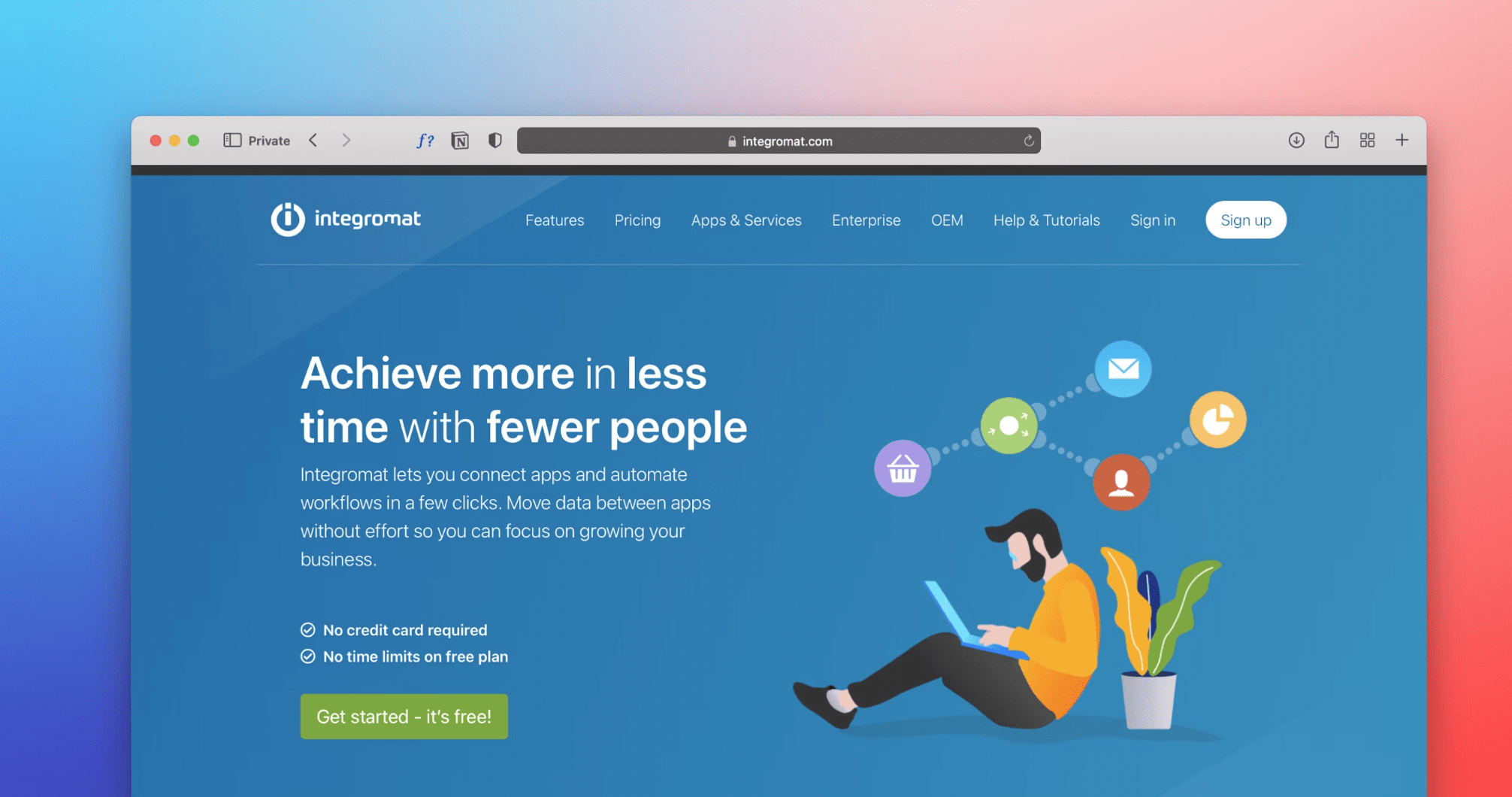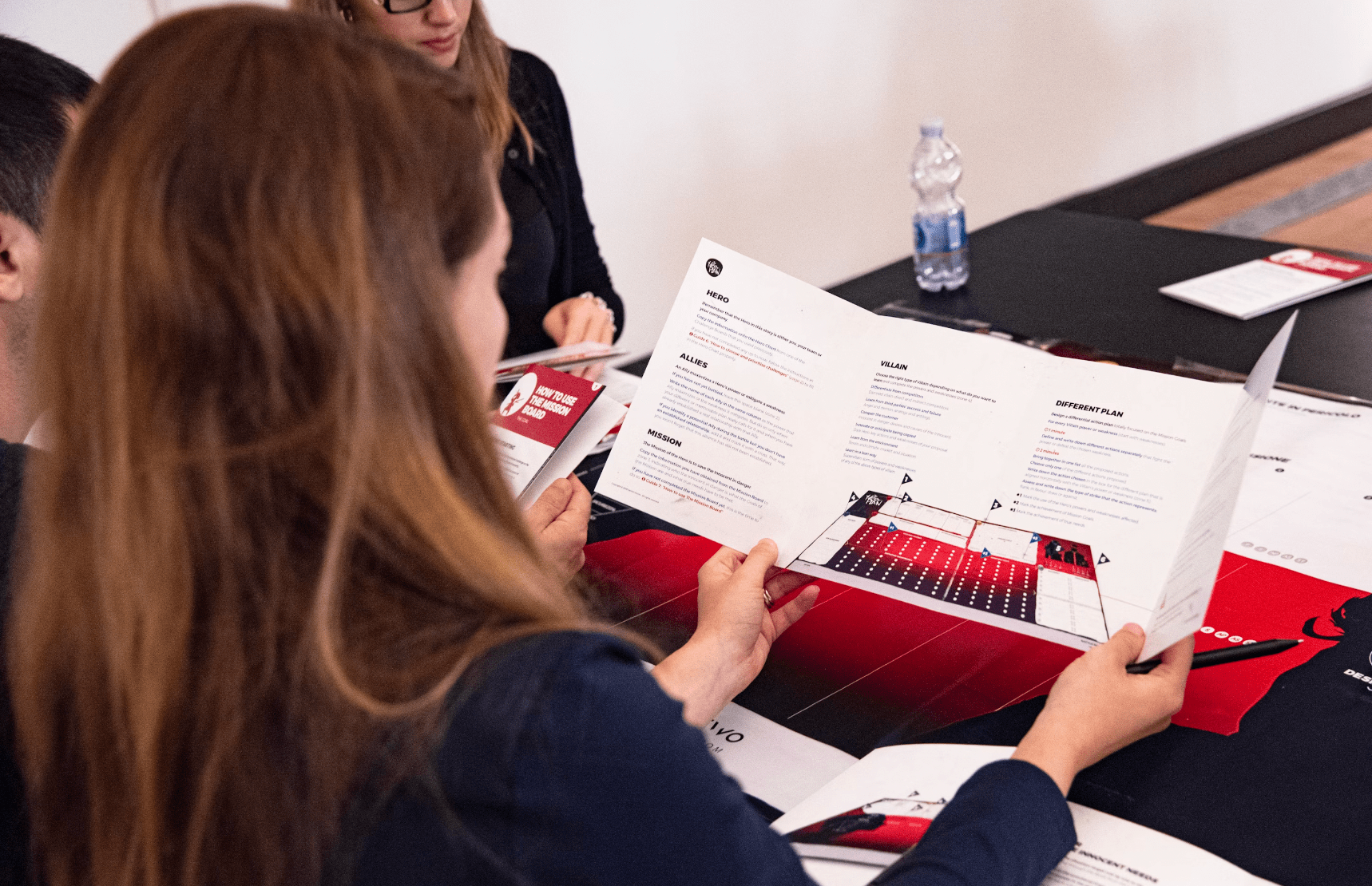What’s On The Menu?
“My old man once told me a story from when he moved to Melbourne from Croatia in the 50s. He walked past a stall selling clay pottery (which he used to craft in the motherland) - he quizzed the guy on why there were such similar pieces worth $5 and some worth $100. ‘Some people like to pay $5 and some people like to pay $100’”
- Redditor u/no-post-5098
One of the most overlooked elements of designing a new business is the menu: the collection of products, services and offers that you’re presenting to a potential customer.
Every business has a menu, but not all business owners are good at giving customers clear and compelling choices, leading to a lot of lost sales.
As they say: “A confused mind never buys”.
Bad menus are damaging because:
· They offer one option to everyone, which won’t be everyone’s cup of tea
· Your pricing seems unclear or unconvincing
· They offer an overwhelming amount of choices and create analysis paralysis
Good menus, on the other hand, are an asset because:
· You make it easy for customers to understand their options
· You list a helpful amount of choices
· You can offer packages to suit a wider range of budgets
· You can demonstrate what sort of experience you intend to deliver
· Your menu can be used to test different ideas and gauge customer interest
And yet, people don’t take the time to intentionally design a persuasive and lucrative menu.
They shove vague or confusing options in front of their customers, and claim “it’s a numbers game” as people leave feeling over/underwhelmed.
We’re not looking at the graphic design of your menu, but rather the strategic choices behind what you’re offering customers, and how you persuade people to trust your brand.
Someone Misses Out
One of the key principles of Daniel Priestley’s book Oversubscribed is that, in order to be oversubscribed, someone has to miss out.
We can’t serve everyone in the market.
Someone will have to be told “no”, or that your business is the wrong fit for them.
Look at every industry – there are lots of competitors, each with a slightly different position in the market.
For every brand in that field, there is someone who thinks they are too expensive, too cheap, not special enough, too niche, too mainstream, not what they consider to be cool, or not something they are familiar with.
Look at online reviews – every product you’ve bought, every movie you love, every company you shop with will have detractors.
The first decision for your menu will be who is this for, and who is this not for?
These aren’t policies, but conscious choices to serve a certain audience, and in the process accepting that other audiences will be better served somewhere else.
More specifically, this will determine:
· What is the minimum spend for a customer?
· What is the maximum spend/best experience we can offer?
· How tailored are we willing to make a customer’s experience?
· What does a customer need to bring to the table in order to shop with you? (e.g. knowledge, equipment, additional purchases, etc)
Revenue Streams
There are lots of things your business can offer a customer, including:
· Physical products
· Digital products
· In-person services
· Remote services
· Access to a shared resource
· Membership to a club
· Access to another customer segment (e.g. advertising)
· Licensing your intellectual property
· Agent/broker fees
Perhaps your industry gravitates towards one particular option, but it’s worth thinking about alternatives that could benefit a customer.
Vidal Sassoon, London’s most in-demand hairdresser in the 1960s, originally made his living by cutting hair.
One night at a party, his friend Michael Caine had a few drinks and approached Vidal with some unsolicited career advice.
He explained that actors make money while they sleep via royalties, and singers make money while they sleep from albums and radio play.
He told Vidal “You will never be truly rich until you find a way to make money in your sleep”.
Vidal took the advice to heart, and made three big moves:
Firstly, he decided to train others to cut in his distinct style, launching the Vidal Sassoon Academy of Hair.
Secondly, he created consumable products, like shampoos and conditioners and other hair products to be sold through salons.
Thirdly, he created hair tools like hair dryers, sold around the world.
In hindsight it seems inspired and perhaps obvious, but the question of “how might we make money while we sleep?” is one of the best nudges for a growing company.
If you look at the big and most innovative businesses of the last 20 years, a lot of them have made their money by expanding into new revenue streams:
· iTunes turned customers away from albums and onto MP3 downloads, and then Spotify turned them towards streaming.
· Patreon created a new way for artists and creatives to make money from exclusive clubs, which often offered fans digital products in exchange for monthly payments.
· Social media replaced print media in offering content to an audience, and selling advertising to companies who wanted access to that audience, without the hassle of printing and distributing newspapers or magazines.
· Educators and trainers have shifted to online courses, coaches can now meet with clients without the need for physical spaces, video games have switched towards memberships and access passes.
The interesting thing about this list is that most revenue streams might not suit your company or your audience, but you only need one new alternative in order to have a whole new way of making money.
Paywalls
A paywall is the point at which someone needs to pay money in order to continue gaining value from your work.
Paywalls are incredibly important because they have the power to entice and to infuriate customers.
There are lots of pros and cons for where you place your paywalls, so you’ll want to think them through:
You might choose to create content online that lets customers engage with your business, so that they know, like and trust your work.
Podcasts, YouTube and Instagram are effective for certain types of brand.You might offer short introductions to your products and services before asking for a purchase. Going back to our iTunes example, Apple allowed you to listen to a 30-second clip before you decided to buy it.
Similarly, record stores let you listen to their vinyl on headphones in the shop.
Myspace saw artists offering 3-4 songs for free streaming, in order to generate interest in their music.
Katy Perry and Lily Allen both used this to great effect.Some software and platforms run with a “freemium” system, in which you can access basic features for free, with payment required for “premium” upgrades.
You’ll see this on Canva, where the better templates and elements require a subscription.Similarly, some SaaS businesses let users have a small number of seats on a platform, paying for more as their business grows larger.
This is designed to show customers the power of their technology, then asking for money once they’ve demonstrated their value.Free trials or samples can be effective too, like a 7-day gym membership or a free trial day at a coworking space.
This is effective when your customers are hesitant to make a commitment without a first-hand experience.
A paywall is effective when it helps overcome customer resistance.
If customers aren’t hesitant to make a purchase, paywalls increase risk more than they increase sales.
They are particularly rewarding when you’re confident in the quality of your offering, and know that customers will agree once they have experienced it for themselves.
This is less relevant when you are trying to be the cheapest/leanest option in your industry – the allure of low prices is likely going to win you the sale anyway, but it might help to have a way of demonstrating comparable quality or performance.
Bundles
It’s not clear why this happens, but sometimes we are drawn to a great value bundle while not being tempted by the individual elements.
You sometimes see these called “Value Packs” or “The Complete Collection”, made up of products, services and experiences that complement each other.
Bundles are usually promoted as being good value through discounting or being the most comprehensive solution, but that’s only the case if the customer was likely to buy all of the pieces individually.
These are great for customers who want to go “all-in”, making a large commitment to behaviour change.
This works particularly well with customers who are motivated by frustration or aspiration, and who want to do something drastically different.
The story and excitement that comes with the bundle is usually more persuasive than the economic value.
Vice versa, unbundling is a great option for customers who are hesitant to make a large commitment.
A good example of this is Philips Hue, a customised lighting setup for homes and offices.
Their starter kit, which goes for around $370 in Australia, contains three bulbs, a light strip and the Hue Bridge, an essential piece of equipment.
If you know any Hue customers, you will know that there is no possible way that they will have only purchased this kit.
It is a gateway drug, and realistically a household will spend $1-2k on a full setup.
That’s an intimidating figure, so Philips generally sell each piece separately, making it a gradual acquisition rather than a full outlay.
Unbundling works for situations where a customer would rather select only the items, services or features that serve them in that moment.
For your business, this is a good deal if you’re convinced that these customers will come back for more, otherwise you’re letting them make a much smaller order.
Bundles can take shape by clever design – by learning what certain customers generally enjoy, and creating packs that serve future customers really well.
More cynically, you might see some brands doing the opposite, using bundles to add in features and extras that are less essential to the customer, under the guise of offering “better value” when they then apply a discount.
Any kid in Australia who’s bought a showbag before will know exactly what we mean.
Alex Hormozi’s Six Questions
In his book $100m Offers, entrepreneur Alex Hormozi uses six good questions to think about product design:
What level of personal attention do I want to provide?
- One-on-one
- A small group
- One to manyWhat level of effort is expected from them?
- Do it themselves (DIY) - figure out how to do it on their own
- Do it with them (DWY) - you teach them how to do it
- Done for them (DFY) - you do it for themIf doing something live, what environment or medium do I want to deliver it in?
- In-person
- Phone support
- Email support
- Text support
- Zoom support
- Chat supportIf doing a recording, how do I want them to consume it?
- Audio
- Video
- WrittenHow quickly do we want to reply? On what days? during what hours?
- 24/7
- 9-5
- Within 5 minutes
- Within an hour
- Within 24 hrs10x to 1/10th test: If my customers paid me 10x my price (or $100,000) what would I provide?
If they paid me 1/10th the price and I had to make my product more valuable than it already is, how would I do that?
How could I still make them successful for 1/10th price?
Stretch your mind in either direction and you’ll come up with widely different solutions.
These are great questions because they highlight options and combinations that have always been possible, but haven’t been at the front of your mind.
You might see two or three distinct combinations, based on the customer’s desired level of service and their budget.
i.e. DIY in a one-to-many format with little interaction could be much cheaper and more accessible than a one-to-one delivered in person, with the customer having your personal phone number.
You don’t have to be subservient to them, you’re just increasing the level of effort you put in, in line with what you’d charge.
The other strength to these questions is that you can keep 4-5 of the questions similar to the other brands in your industry, change 1-2 questions and create an innovative business that appeals to a different type of customer.
You don’t have to be radically different, you might only need to change one aspect.
This was the case with Guy Laliberte, who allegedly created Cirque Du Soleil around the question “how would we create a show that’s worth $100 a ticket?”.
That question led to a few changes from what other circuses were doing, like not using animals, and led to a whole new segments of the industry.
Whose Money Is It?
As distasteful as it may sound, people behave differently when they’re spending other people’s money.
We’d like to think that we are equally logical irrespective of who’s paying, but our behaviour says otherwise.
There are a few ways in which this factors into our menus:
Who is the decision maker and who are they accountable to?
Who’s going to ask about this purchase, and what will have to be justified?
For some cases, this comes down to cost, but it might also be about reliability, familiarity, speed or performance.What are the minimum and maximum thresholds?
If you’re selling something to a business (or people who are spending company money), then they’ll often have policies about when they can make a quick choice vs having to go to tender.
e.g. they can make whatever choice they want, up to the value of $5,000 but anything over that will require them to get multiple quotes and take the options to a committee.What happens with any money NOT spent here?
Does the customer benefit from saving cash, or do they not receive any extra benefit for being frugal?
Personal cash is different, because they money saved stays in your account.
Business money might come back in the form of a bonus, credit or more budget for other initiatives, or it might be overlooked by the company.
This will affect how much customers care about the “better vs cheaper” dilemma.How is value measured?
Does this person value a low upfront cost or a low total cost?
A cash saving or a guarantee that they’ll get everything they are wanting?
Functional benefits or some sort of personal gain?
This might sound like overkill, but watch how people spend their budgets and you’ll see their irrationality kick in at some funny moments.
Experiments With Menus
You do not need to create one singular permanent menu – you can use your menus as a method of testing different propositions with different customers.
These might include experiments with:
• Small or large amounts of options
• Different ways of framing prices
• Adding in new items to see if they attract any attention
• Rearranging your layout to see if this affects sales
• Bundles and packages with varying prices and incentives
A menu is an offer – if no one takes you up on an offer, it costs you almost nothing.
This is like a shadow test or pretotype, experiments on whether or not a concept can attract even the slightest amount of customer interest.
You can make different offers and measure the results; if something is popular, you can choose to make it a more permanent menu item going forward, or if not, most customers won’t remember that you offered it in the first place.
There are no strict rules here, but it’s probably best to start by questioning the biggest decisions behind your menu: are we talking to good customers and do we have products, services and offerings that they’ll like?
If the answer is yes, everything else gets easier.
If the answer is no, no amount of pricing psychology is going to save you for long.
Entrepreneurs have so much flexibility and room to be creative, and in exchange, none of their menu assumptions have earned permanence.
There are so many things you could build, and none are worth falling in love with before they’ve been validated.
Eventually you can get to the smaller details that often get suggested in these conversations, like changing the last decimal of your price to a “9” or using contrasts to make larger purchases seem like better value.
These can work, but they’re best used when you’re driving more interest to a proven menu.







